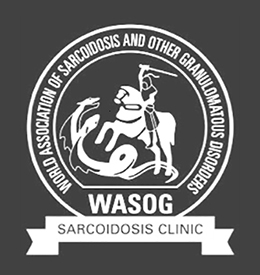 The University of Arizona Interstitial Lung Disease (ILD) Program at Banner – University Medical Center Tucson and South clinical facilities has been recognized as a WASOG Sarcoidosis Clinic by the World Association of Sarcoidosis and Other Granulomatous Disorders.
The University of Arizona Interstitial Lung Disease (ILD) Program at Banner – University Medical Center Tucson and South clinical facilities has been recognized as a WASOG Sarcoidosis Clinic by the World Association of Sarcoidosis and Other Granulomatous Disorders.
“This designation provides formal recognition of your team’s commitment to meet the needs of sarcoidosis patients and efforts to keep abreast of the ongoing advances and findings in the space,” noted Marjolein Drent, MD, PhD, WASOG president and a pulmonologist at the ILD Center of Excellence of the St. Antonius Hospital in Nieuwegein, The Netherlands, in the UA program’s acceptance letter.
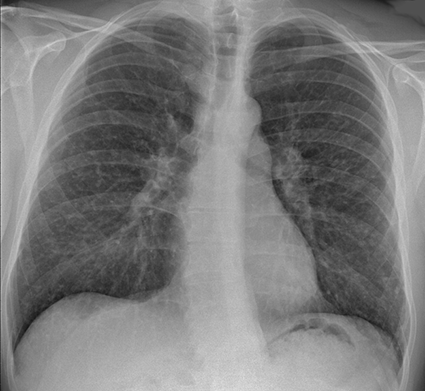 “What this means is that we are now recognized for the available expertise and the excellent work that goes on every day here for the care of the high risk patients with sarcoidosis,” said Bhupinder Natt, MD
“What this means is that we are now recognized for the available expertise and the excellent work that goes on every day here for the care of the high risk patients with sarcoidosis,” said Bhupinder Natt, MD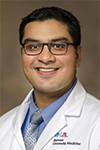 , medical director of the Medicine Intensive Care Unit (MICU) at Banner – UMC South. “Sarcoidosis affects almost every organ system in the body and the coordination of care between different specialties. The complex decision making, the high risk medications that patient may need are all available here at the ILD program at the UA that is now recognized by this international organization.”
, medical director of the Medicine Intensive Care Unit (MICU) at Banner – UMC South. “Sarcoidosis affects almost every organ system in the body and the coordination of care between different specialties. The complex decision making, the high risk medications that patient may need are all available here at the ILD program at the UA that is now recognized by this international organization.”
Left, chest X-ray of sarcoidosis nodules (Courtesy Mikael Häggström via Wikipedia)
ILDs are a group of disorders that cause progressive scarring of lung tissue. Sarcoidosis is an inflammatory disease with no known cure characterized by formation of granulomas—tiny clumps of inflammatory cells—in one or more body organs, most frequently the lungs. African American actor and comedian Bernie Mac, known for roles in “The Original Kings of Comedy,” “Oceans 11,” “Mr. 3000” and a self-named, Emmy-nominated TV show, died of the disease at the age of 50 in 2008.
WASOG was founded in 1987 in Milan, Italy, during the World Congress for Sarcoidosis, and—due to the nature of the disease—is not limited to just pulmonary physicians, but includes cardiologists, dermatologists, neurologists, infectious disease specialists, hepatologists, geneticists and hematologists. It collaborates with a number of related organizations in the United States, including the Pulmonary Fibrosis Foundation, Foundation for Sarcoidosis Research and American College of Chest Physicians.
The University of Arizona program at the Banner – University Medicine Lung Institute in Phoenix also was recognized as a WASOG Sarcoidosis Clinic in 2017. It and the Tucson facilities are the only programs in Arizona and among 51 in the United States to hold this designation. Outside the United States, an additional 24 such clinics also are recognized. 
Sachin Chaudhary, MD, director of the ILD Program at the UA and Banner in Tucson, added, “Being a WASOG Sarcoidosis Center gives patients extra confidence in our physicians knowing what they’re doing in terms of diagnosis and treatment. They can rest assured that they’re being covered by an expert who sees many cases like theirs. It’s also a good organization in terms of patient support groups and access to clinical trials.”
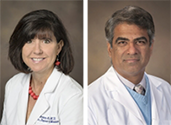 Monica Kraft, MD, UA Department of Medicine chair, and Sairam Parthasarathy, MD, interim chief, UA Division of Pulmonary, Allergy, Critical Care and Sleep Medicine, applauded the ILD Program's Drs. Chaudhary, Natt and Tammer El Aini, MD, for their teams’ hard work on this achievement. Christian Bime, MD, is medical director of the MICU at Banner – UMC Tucson.
Monica Kraft, MD, UA Department of Medicine chair, and Sairam Parthasarathy, MD, interim chief, UA Division of Pulmonary, Allergy, Critical Care and Sleep Medicine, applauded the ILD Program's Drs. Chaudhary, Natt and Tammer El Aini, MD, for their teams’ hard work on this achievement. Christian Bime, MD, is medical director of the MICU at Banner – UMC Tucson. 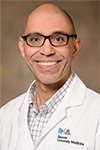
Benefits of the WASOG Sarcoidosis Center designation include:
- Opportunities to participate at research summits and clinician conferences hosted by WASOG and its partners;
- Advanced notice of funding announcements and research findings;
- Mailed certificate for display of this WASOG distinction at your clinic;
- WASOG Sarcoidosis Center logo to highlight the clinic’s recognition for use on approved forms, documents, and promotional materials;
- Opportunities to collaborate and share the clinic’s work with worldwide thought leaders in this space
- Eligibility to apply for certification as a WASOG Sarcoidosis Center and/or Center of Excellence.
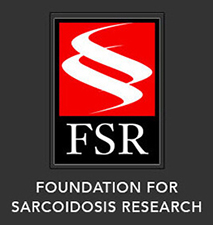 Additional benefits from WASOG’s partnership with the Chicago-based Foundation for Sarcoidosis Research (FSR), the world’s leading nonprofit organization dedicated to finding a cure for this disease and to improving care for sarcoidosis patients, include:
Additional benefits from WASOG’s partnership with the Chicago-based Foundation for Sarcoidosis Research (FSR), the world’s leading nonprofit organization dedicated to finding a cure for this disease and to improving care for sarcoidosis patients, include:
- Sarcoidosis-specific trial recruitment through FSR for clinic studies and trials;
- Designation of the center as a WASOG Sarcoidosis Clinic on FSR’s website – www.stopsarcoidosis.org;
- Designation of the center’s affiliated physicians as belonging to a WASOG Sarcoidosis Clinic in the WASOG and FSR Physicians Directory, a resource utilized by over 5,000 unique website visitors per month;
- Invitations to participate in and/or co-host FSR Patient Conferences;
- Monthly newsletter to take advantage of WASOG/FSR networks, funding opportunities, clinical tools, and resources.
 Sarcoidosis signs and symptoms (Courtesy NIH/NHLBI via Wikipedia)
Sarcoidosis signs and symptoms (Courtesy NIH/NHLBI via Wikipedia)
In sarcoidosis, according to the National Institutes of Health and National Heart, Lung, and Blood Institute, when the immune system goes into overdrive and too many of these inflammatory clumps form, they can interfere with an organ’s structure and function. Unchecked, chronic inflammation can lead to fibrosis, or permanent scarring of organ tissue. This disorder affects the lungs in about 90 percent of cases, but can affect almost any organ in the body. Despite advances in research, sarcoidosis is difficult to diagnose with limited treatment options and no known cure.
The American Thoracic Society reports that, sarcoidosis affects people of all ages worldwide, with the highest incidence in those between ages 20 and 40 with significant racial and gender differences. Northern European countries show the highest incdence, at 5 to 40 cases per 100,000 people per year. But, at 36 cases per 100,000 people per year, African Americans—women in particular—are about 3 timesmore likely than Caucasian Americans (11 cases per 100,000) to have sarcoidosis. Sarcoidosis in African Americans is also more likely to be chronic, involve several organs, and lead to death.
To learn more about sarcoidosis clinical care, see archived video of the Medicine Grand Rounds lecture by Dr. Bhupinder Natt, given Aug. 22, 2018, at the UA College of Medicine – Tucson, at this link: https://streaming.biocom.arizona.edu/event/?id=28379

